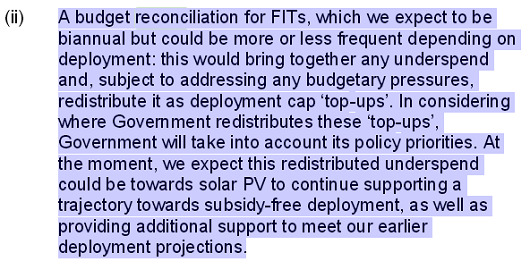Large-scale commercial rooftops have continued to deploy impressively under the new feed-in tariff regime despite a 10% degression occuring after the previous cap was breached.
Statistics released by Ofgem on Friday afternoon revealed that deployment under the 50kW+ band reached 6.8MW, just under half (48%) the total 14.5MW cap for the period 1 April to 30 June.
A total of 5.43MW was carried over from the previous cap meaning that 1.37MW has been deployed in the first two weeks of the current cap. With more than two months of the period remaining just 7.7MW of capacity is allowed under the capping mechanism.
Last week Lark Energy managing director Jonathan Selwyn spoke of his belief that the commercial market was showing “signs of continuing life” and that while it remained a tough market to operate in, he was of the opinion there is “absolutely no doubt” that it will continue.
Deployment has so far been comparatively stronger under the 50kW+ rooftop band than the residential (>10kW) and medium-scale (10-50kW) bands, which both left a considerable amount of capacity unallocated in the first FiT period.
The first 12 days of FiT period two witnessed 2.56MW of residential-scale solar deployment, continuing its trend of between 1.5-2MW per week from the previous quarter. This led to a significant amount of unutilised capacity being carried over into the current quarter, taking the new cap to almost 77MW.
Deployment under the 10-50kW band has also been low, with less than 1MW installed under the current deployment cap so far.
With installations across the three bands mixed, questions have been raised over a future redistribution of the deployment caps. Within DECC’s consultation response there is a clause mandating for a future reconciliation within the caps, allowing for unutilised capacity to be redistributed elsewhere and for additional support to be extended.

When asked by Solar Power Portal when the first reconciliation could occur, and whether the department had considered intervening already given the mixed deployment records, a DECC spokesman said that the department’s position “hasn’t changed” with regards to future reviews.
However David Pickup, business analyst at the Solar Trade Association, said the trade body had warned the government over the potential for this to happen.
“Domestic and smaller commercial deployment (10-50kW) has been low, and with the increased cap from last quarter it is unlikely these caps will be met without a big increase in run rate.
“The industry is outpacing the cap in commercial rooftop, with almost half of the cap already met, despite it only being a few weeks into the second quarter. We previously warned the government on the dangers of commercial cap constraints and are developing solutions to this problem with our members,” he said.
